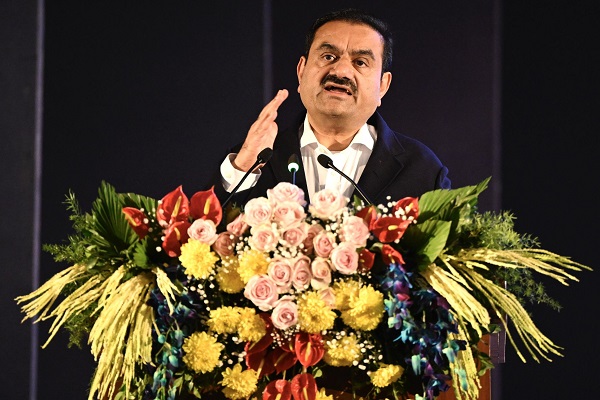Sector Update :Financials – Non Lending -Rate cuts to boost flows in longer-duration funds By Motilal Oswal Financial Services Ltd

Rate cuts to boost flows in longer-duration funds
* Positive for AMCs’ profitability
* Over the past couple of years, AUM of the MF industry has recorded a 29% CAGR driven by strong growth across categories except the Debt segment, which grew at a modest pace of 2.9%. Equity/Hybrid/Liquid/ETFs have reported a 41%/33%/20%/ 31% CAGR over the same period.
* Since achieving an all-time high of INR11t in Jan’21, the AUM of debt-oriented schemes declined to reach INR7.7t in Mar’23. The decline was led by ~250bp hike in interest rates during the same period and the scrapping of indexation benefits for taxation. Nevertheless, with rate cut expectations round the corner, recent trends are indicating increased traction in inflows.
* While investments in liquid schemes maintain their momentum, longer-duration schemes (1-10 years) witnessed significant outflows during FY22-FY23. In FY24, the trends reversed with modest inflows, and in FY25 the momentum seems to have picked up.
* The US Fed rate cut in Sep’24 after four years may signal the start of declining RBI repo rates in the near future. This would improve the attractiveness of the longer-duration schemes for investors, aided by likely capital appreciation gains and improved yields. After the commencement of the RBI repo rate cuts in Jan’19, in one-year, the returns of the long-duration schemes and Gilt were at an all-time high of 14.4% and 13.4% in Jan’20.
* As the AUM mix in the debt segment tilts towards longer duration funds, the yield on debt AUMs is likely to improve for AMCs. This could partially cushion the impact of the telescopic structure on equity yields.
Debt-oriented schemes facing challenges
* While the spotlight on equity schemes remains constant, debt-oriented schemes’ growth has been tepid, with debt fund AUM at INR8.7t (as of Aug’24) reporting a two-year CAGR of 3% vs. 39% for equity schemes. However, the segment has gained traction recently, reflected in net inflows in four of the last five months.
* During the past couple of years, the rising interest rate environment translated into an increase in interest rates on fixed deposits, making them a compelling investment avenue vs. debt mutual funds. Most banks are offering attractive interest rates in the range of 6.6-8.5% for FDs of 9-36 months.
* The previous interest rate cut cycle (Jan’19-May’20 repo rate cut of 250bp), led to ~2x+ growth of debt AUM in Mar’20/Mar’21 vs. growth of bank deposits. The RBI rate hike in Apr’22, after stable repo rates for two years, led to a 12%/17% YoY decline in the AUM of debt-oriented schemes in Mar’22/Mar’23, while bank deposits grew ~10% YoY during both time periods. While there have been inflows in debt-oriented schemes in FY24 as well as in FY25YTD, AUM growth remains below the deposit growth trajectory.
* The Union budget 2023 scrapped the indexation benefits available on the longterm gains generated from debt mutual funds, and the same will now be taxed as per the investor’s tax slab. This removed the tax-related advantage of debt schemes over FDs, making it less attractive.
* Investor interests in active duration strategies drive inflows in sub-categories of debt asset class. FY25 began with preference for shorter maturity profiles for temporary parking of funds, with flows in overnight funds, ultra-short duration funds, and short duration funds remaining strong.
* During FY25YTD, net inflows across most schemes with 1-10-year duration have already surpassed the inflows witnessed during FY24. Net inflows in short duration funds (1-3 years) have been at INR83.3b (INR4.3b in FY24), medium- to longduration funds (4-7 years) at INR3.8b (INR8b in FY24), long duration funds (7+ years) at INR31.1b (INR 30b in FY24), and Gilt funds at INR66.5b (INR43.5b in FY24).
* The US Fed interest rate cut in Sep’24 after four years raises similar expectations from the RBI, which will likely enhance the flow momentum in long-duration funds, going forward. The long-duration funds are highly sensitive to interest rate changes, and hence, a declining interest rate will lead to capital gain appreciation, making it an attractive investment.
* Historical trends suggest improvement in returns of long term duration funds during a declining interest rate environment. After the commencement of the RBI repo rate cuts in 2018, the one-year CAGR of long-duration schemes and Gilt was at an all-time high of 14.4% and 13.4%, respectively, in FY20.
* Interest rate cuts also increase the attractiveness of long-term guaranteed products. During the previous interest rate cut cycle (Jan’19 to May’20 repo rate cut of 250bp), the average growth rate of the life insurance industry until May’22 (repo rate was stable for two years) was 14% (reporting a sharp decline during Covid-19 and taking taxation changes of ULIPs into consideration). Within the same period, deposit growth was 10%. However, with taxation on INR0.5m+ ticket size, the larger ticket size can flow to debt funds.
Competition intensifying with rising popularity of private credit
* Private credit has become one of the most rapidly emerging asset classes in the country, with deals aggregating to USD6b in 1HCY24, compared to USD8.6b in CY23 and USD5.9b in CY22. On the other hand, the AUM of credit risk funds has gone down to USD2.8b in FY24 from USD9.9b in FY19 (source: EY).
* Private credit funds have emerged as popular providers of debt capital for the rapidly growing mid-market, SMEs, and new-age companies due to various limitations in the traditional lending avenues.
* Private credit’s correlation with public markets is lower than other asset classes in the debt category, reducing the portfolio volatility and improving riskadjusted returns. Yields ranging between 12% and 18% provide better returns to investors compared to debt mutual fund schemes.
Additional investment avenue for debt mutual funds
* Recently, SEBI allowed mutual funds to engage in the buying and selling of credit default swaps (CDS) to enhance liquidity in the corporate bond market. Previously, mutual funds were limited to participating in CDS transactions in a buyer capacity only.
* MF Schemes are allowed to sell CDS on a reference obligation that is backed by cash, government securities (G-Sec), or treasury bills. Overnight and liquid schemes are prohibited from selling CDS contracts.
* This provides MFs an opportunity to expand their role in CDS transactions and add another investment avenue.
Impact on AMCs
* Expectation of rate cuts by the RBI is expected to improve the mix of longerterm duration schemes in the debt AUM mix of AMCs, driven by opportunity to harness capital gains and improvement in yields.
* TER of various schemes within 1-10-year duration (including Gilt) ranges between 30-70bp, while highly liquid schemes operate in a TER range of 8-15bp. A change in mix of longer-duration products can contribute towards revenue growth and can also serve as an approach to improving yields with the telescopic TER structure impacting the yield of equity schemes.
For More Motilal Oswal Securities Ltd Disclaimer http://www.motilaloswal.com/MOSLdisclaimer/disclaimer.html
SEBI Registration number is INH000000412










More News

Bank Sector Update : Demand dips, focus shifts and credit growth slows by Kotak Institutiona...














